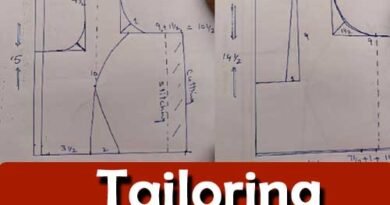Size Chart
Size Chart
Unit Objectives
At the end of this unit, you will be able to
1 Understand the different size chart comparison tables
2 Know the different terms used in size charts
Size Charts
Each country formulates and follows its own size charts taking into account the body type and measurements of
the general population in the country
.
Womens size chart comparison table .
Mens size chart comparison table
Kids size chart comparison table
Terms used in size chart
Womens size chart
Women’s dresses and
Men’s Size Chart
Children Size Chart
Women’s sizing terms
. Petite Reters not only for short women but also a small framed woman (Woman between the height of 4’11-5’35’)
Tall: This is for taller women between 5’8’’-6 ½’’ N and men 6’1’’ and taller.
Plus size: This term for women sized 12-24, and XL-4XL (instead of small, medium, and large)
Big and Tall This term is primarily used for men’s plus sized clothing-sizes 12 and up and XXL-4XL Fits
Men’s sizing terms .
. Relaxed :Relaxed fit clothing, also known as oversized or boyfriend-style clothing for women
Slim: Fit clothing is meant for a closer fit to the body and is often used to describe men’s dress shirts
Rise :The term rise usually used as “low-rise ,” “high-rise” or “mid-rise” is used to describe the distance from the waist to the crotch on pants.
Using a Measuring Tape and Understanding Fractions
Measuring tape is a common measuring tool used by all tailors. It is a flexible ruler with linear measurement markings on it. It consists of a ribbon of cloth, plastic, fibreglass, or metal strip. Its flexibility allows for a measure of great length that permits one to measure around curves or corners.
For taking measurements in garments, generally fibre made measuring tapes are used which have inch markson one side and inch as well centimetre markson the other side
Understanding the markings on the measuring tape
Inches: inches are the long lines that cross either half of or all of the 1″ width of the measuring tape. They usually are preceded or followed by numbers
1/2 of an inch is half of 1 inch.
1/4 of an inch is every four marks on the measuring tape
1/8 of an inch is twice as big as the 1/16 of an inch. It is every other mark
1/16 of an inch is usually the smallest
Measurement on a tape measure. The distance between every line on the tape measures is 1/16 of an inch 1/32 of an inch is even more smaller which only certain measuring tapes indicate. The distance between every line on the tape measure is 1/32 of an inch


